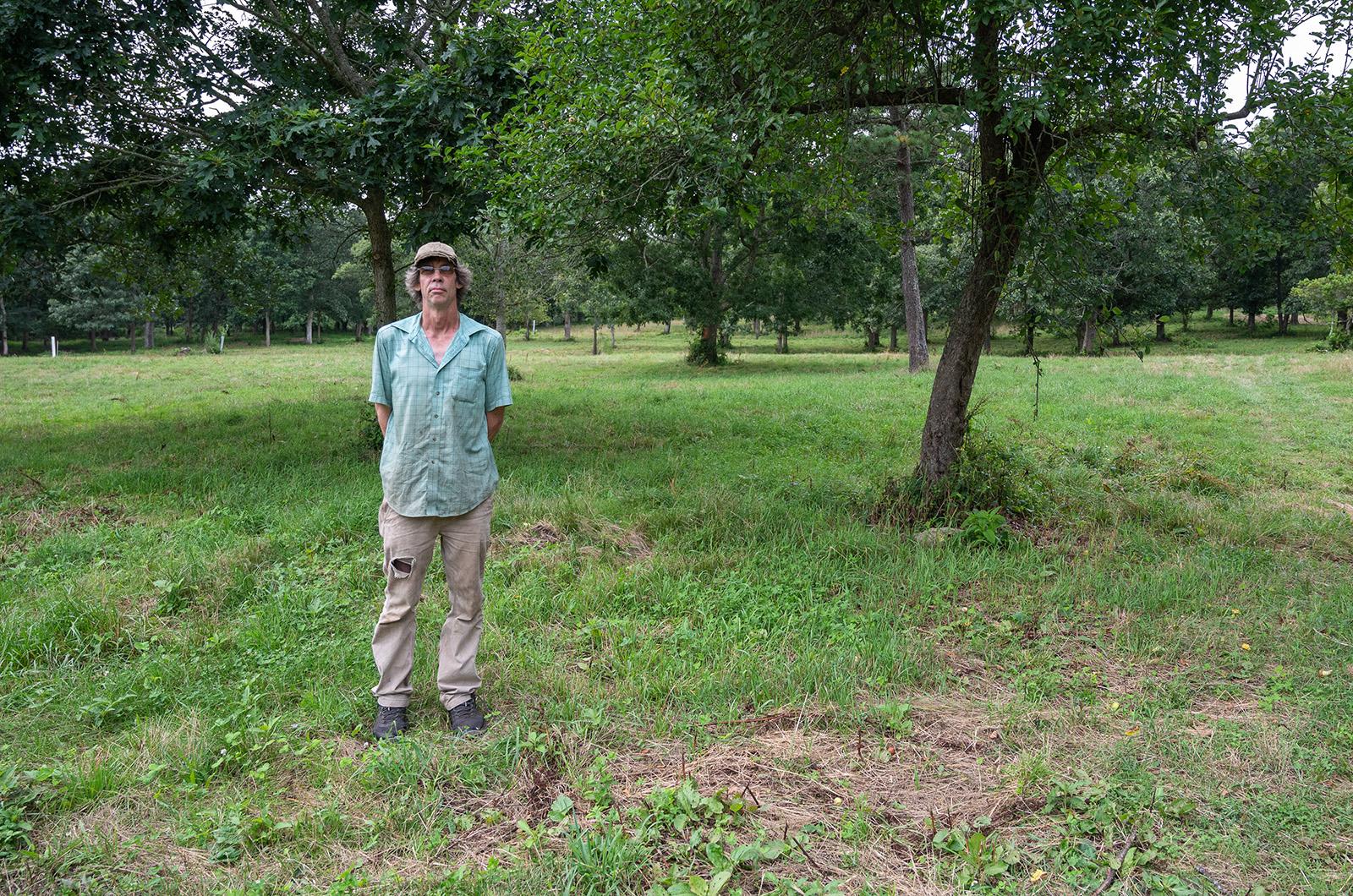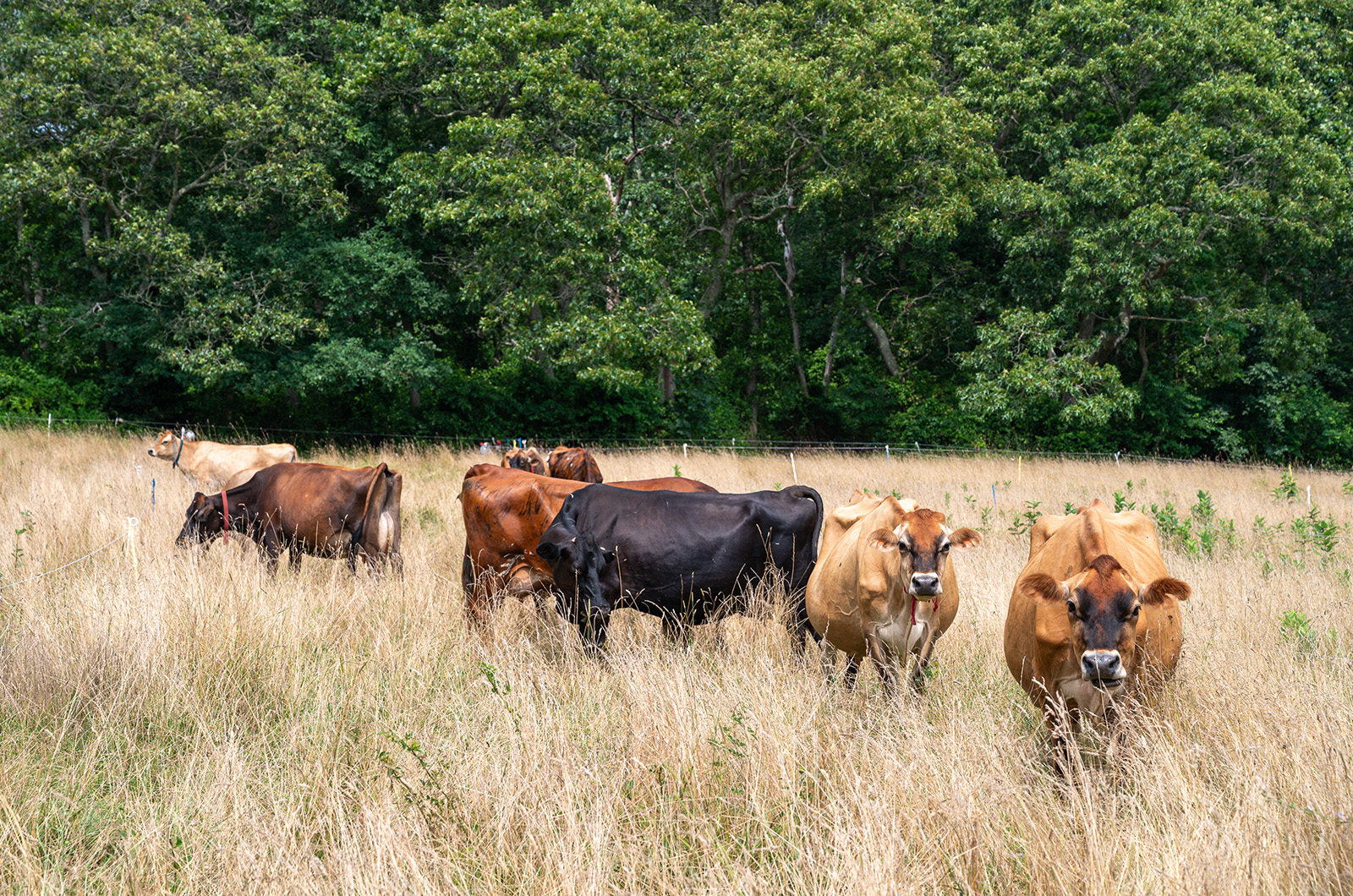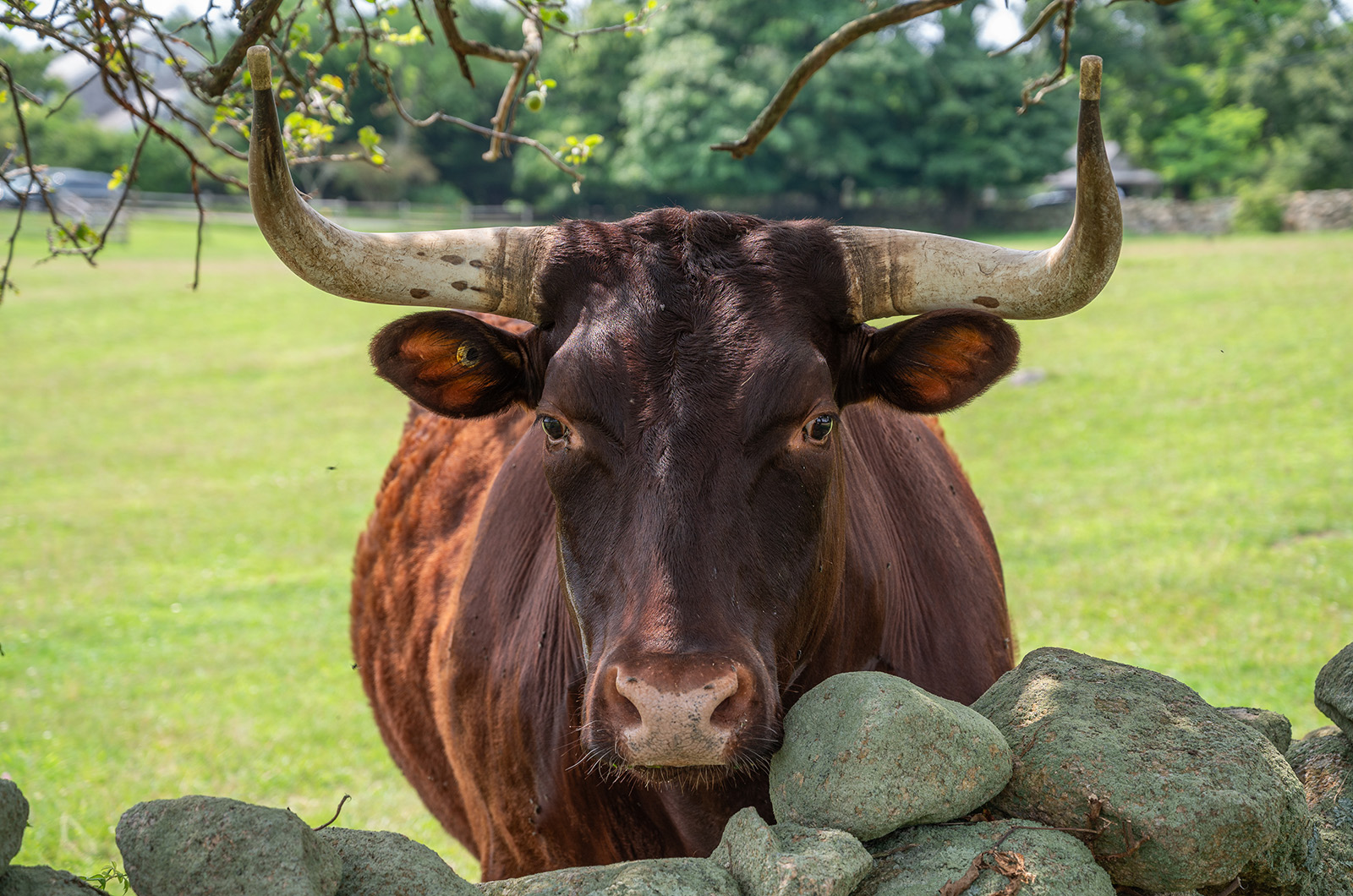When you read the word “pasture,” the image that likely comes to mind is of undulating green hills, or maybe a flat green field. Perhaps a cedar breaks up the pasture here or there, but by and large, you are picturing a green-dominant landscape.
In other words, grass.
If your mental mapping of pasture had been formed by roadside cattle-spotting on-Island, this is not an outrageous conclusion to draw. From the flatlands of Katama to the rolling hills of Chilmark, trees and cattle don’t often seem to mix.
But off the main road, back past the farmstand at Mermaid Farm, cattle graze in a different environment. Oaks dominate the landscape there, not densely planted, but not sparse either. It is an open woodland and in the dappled light beneath the trees, orchard-grass, clover and fresh bramble abound, awaiting the arrival of a ravenous herd.
Silvopasture, the practice of raising livestock in a forested environment, is by no means a new pastoral practice but it has been coming into vogue for a certain breed of farmer. On-Island, Allen Healy of Mermaid Farm is the strategy’s most fervent partisan.
“I think the earth just wants to grow trees,” he said. “I’m just working with what’s here.”
Seated amongst wet grass and chicory at the old wooden farmstand, sporting a worn baseball cap, loose flannel shirt and sturdy rubber boots, Mr. Healy regaled me about silvopasture.
“I’ve been very slowly clearing it out back there and getting the grass to grow,” he said of the process of creating woodland pastures. They require about 50 per cent shade cover, necessitating existing forest be thinned out before it’s ready to graze.
The resulting environment, Mr. Healy said, is one that is a supremely enjoyable for the cattle. Trees provide shade to escape from the hot sun, retain water in the soil and provide convenient scratching-poles for perennially itchy cows.
More important to the dairy farmer, happy cows produce more plentiful milk.
It is Mr. Healy’s contention, too, that his silvopastural strategy, along with his intensive grazing procedures, results in high-quality soil and high-quality food.
“You have to concentrate the cattle, keep ‘em moving,” he said, of his tight pasture rotation.
Kevin Brennan typically runs the rotation. He will set up a long rectangular enclosure broken up into small modules by a series of cross fences. Every 45 minutes, he removes a fence to allow the herd to move into fresh pasture.
“We’re trying to mimic a herd of ruminate bison,” Mr. Brennan said of the process, which leads cattle to more intensively graze each area. While cattle left to their own devices in a large pasture might only go for prime grass, this strategy forces them into a more varied diet.
“They know exactly what to eat when,” Mr. Brennan said. “What you’re giving them, they are gonna use it more efficiently.”
The more concentrated grazing also means that the herd tromps more aggressively on each patch of soil, introducing new oxygen and kickstarting the process of decomposition.
“Each time you graze and trample, a little bit of the grass roots die off, and then the worms and other living things move in,” Mr. Brennan said.
The trees, too, get in on the benefits of that decomposition process, sucking in new oxygen and abundant nutrients from cattle urine and manure.
Those tree roots then interface with the local mycorrhizae, Mr. Healy said, which are fungal networks in the soil that exchange nutrients with the grass and trees.
“They’re all talking to each other: the fungal, the bacterial and the plant,” he said.
In rainy conditions like those of this summer, new grasses, clovers and other forest greens quickly reemerge from of the disturbed area, in three weeks or less, Mr. Healy explained. In the less-bountiful autumn, however, a more conservative rotation is needed and cattle forage is always supplemented by grain.
Mr. Healy believes the strategy could be adapted to other Island forests, boosting their soil health and reducing the local deer population by periodically depriving them of wild food. He compared the practice to controlled burns, clearing out old growth and making way for new.
“Nature just grows after things get destroyed,” said Mr. Brennan.
Mr. Healy offered a different perspective.
“Not destroyed, just disturbed. Changed.”







Comments (1)
Comments
Comment policy »